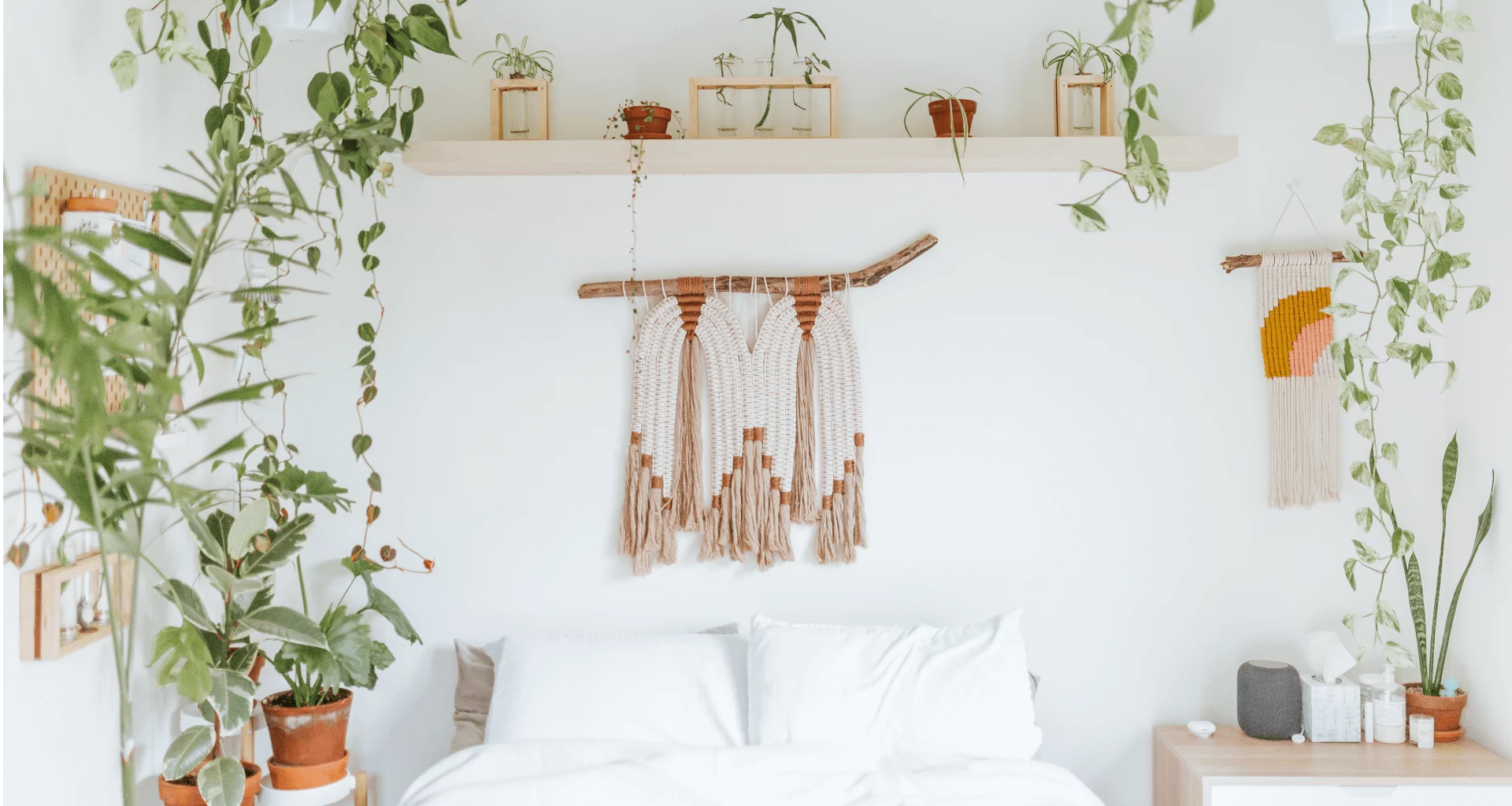Your living space plays a significant role in your overall well-being and mental state. Creating a serene and harmonious environment at home can have a profound impact on your daily life, promoting relaxation, rejuvenation, and a sense of inner peace. In this ultimate guide to home wellness, we will explore a variety of practical strategies, tips, and ideas to
transform your living space into a tranquil escape. From incorporating natural elements, optimizing lighting and color schemes, to decluttering and creating dedicated relaxation zones, we will provide you with the tools and inspiration to curate a home environment that nurtures your well-being. Discover how small changes and intentional design choices can elevate and transform your living space into a sanctuary where you can unwind, recharge, and find solace amidst the demands of modern life. Let’s embark on this journey to create a home that not only reflects your personal style but also promotes serenity and supports your holistic well-being.

Introduction to Home Wellness
Benefits of a Serene and Peaceful Living Space
Research has shown that our living space has a significant impact on our mental and emotional well-being. A study published found that individuals who lived in an organized and clutter-free environment reported lower levels of stress and anxiety. On the other hand, individuals who lived in disorganized and cluttered environments reported higher levels of stress and anxiety, which can lead to decreased productivity and creativity.
A serene and peaceful living space can also promote relaxation and improve our sleep quality. When our living space is full of clutter and chaotic, it can be challenging to unwind and relax, which can negatively affect our sleep quality. A study published in the Journal of Sleep Research found that individuals who slept in a clean and organized bedroom had better sleep quality and felt more rested in the morning.
Strategies for Creating a Serene and Peaceful Living Space
Creating a serene and peaceful living space is possible, regardless of the size or layout of our living space.
Here are some strategies that can help:
Declutter Your Living Space
Get rid of items that no longer serve a purpose, donate or sell items that are still in good condition, and organize remaining items in a way that is functional and visually appealing.
Bring nature indoors
Incorporate plants, flowers, or a small garden to bring nature inside and promote relaxation.
Choose calming colors
Colors such as blue, green, and neutral tones can promote relaxation and create a calming atmosphere.
Use natural lighting
Natural lighting can promote relaxation and improve our mood. Try to maximize natural lighting by opening curtains and blinds.
Incorporate aromatherapy
Essential oils, such as lavender, can promote relaxation and reduce stress.
Creating a serene and peaceful living space is essential for maintaining our mental and emotional well-being. A clutter-free and organized environment can promote relaxation, reduce stress and anxiety, and improve our sleep quality. Strategies for creating a serene and peaceful living space include decluttering, bringing nature indoors, choosing calming colors, using natural lighting, and incorporating aromatherapy. By implementing these strategies, we can transform into a living space that promotes relaxation and improves our overall quality of life.
Declutter and Organize
Benefits of a Decluttered and Organized Living Space
Research has shown that living in a cluttered environment can have negative effects on our mental health. A study published found that women who described their homes as cluttered and unfinished had higher levels of the stress hormone cortisol than women who described their homes as restful and restorative.
On the other hand, a decluttered and organized home can have positive effects on our mental and emotional well-being. It can promote relaxation, reduce stress, and improve our mood. When our home is organized, it can also increase productivity and creativity.
Tips and Tricks for Decluttering and Organizing Your Living Space
Decluttering and organizing your home can be a daunting task, but it is worth the effort.
Here are some tips and tricks to help you achieve a clutter-free and organized home:
Start small
Begin by decluttering and organizing one area at a time, such as a closet or a drawer. This will help you avoid feeling overwhelmed.
Set realistic goals
Decide what you want to achieve and set realistic goals for yourself. For example, you may want to declutter your entire home, but it is more realistic to start with one room at a time.
Donate or sell items
If you have items that are still in good condition but no longer serve a purpose, consider donating or selling them.
Create a system
Create a system for organizing your items, such as using bins or labels. This will help you keep your home organized in the long term.
Get rid of duplicates
If you have duplicates of items, such as kitchen appliances, consider getting rid of the extras. This will help you declutter and free up space.
Use storage solutions
Use storage solutions such as shelves, cabinets, and drawers to keep your items organized and easy to find.
Decluttering and organizing your home can have a significant impact on your mental and emotional well-being. It can promote relaxation, reduce stress, and improve your mood. By starting small, setting realistic goals, donating or selling items, creating a system, getting rid of duplicates, and using storage solutions, you can achieve a clutter-free and organized home. Remember, a decluttered and organized home is a happy home!
Incorporate Natural Elements
Our homes are more than just physical structures that provide us with shelter. They are also our sanctuaries, our places of refuge where we can unwind and recharge. As such, it’s essential to make our homes a comfortable, relaxing, and healthy environment that supports our physical, emotional, and mental well-being. One of the most effective ways to achieve this is by incorporating natural elements like plants, sunlight, and fresh air into our living spaces. In this article, we’ll explore the benefits of bringing natural elements into your home and provide tips on how to do so effectively.
Benefits of Incorporating Natural Elements into Your Living Space
Reduces Stress and Anxiety
Research has shown that exposure to nature can help reduce stress and anxiety levels. Bringing plants into your home is an easy way to incorporate nature into your living space and enjoy the benefits of reduced stress and anxiety. Plants have a calming effect on our minds and bodies, making them an excellent addition to any room in your home.
Enhances Mood and Wellbeing
Sunlight is a natural mood booster that can enhance your overall well-being. Exposure to natural light helps regulate our circadian rhythms, which can improve our sleep patterns, energy levels, and mood. Natural light can also help reduce symptoms of seasonal affective disorder (SAD), a type of depression that occurs during the darker months of the year.
Improves Air Quality
Indoor air quality can have a significant impact on our health and well-being. Poor air quality can lead to respiratory problems, allergies, and other health issues. Bringing in fresh air through open windows, using air purifiers, and incorporating plants into your home can improve air quality and help you breathe easier.
Boosts Productivity and Creativity
Studies have shown that exposure to nature can boost productivity and creativity. Bringing natural elements into your home, such as plants, can help increase productivity levels, enhance creativity, and improve overall cognitive function.
Tips for Incorporating Natural Elements into Transform Your Living Space
Bring in Plants into Your Living Space
Adding plants to your living space is an excellent way to incorporate nature into your home. There are many different types of plants that are easy to care for and can thrive indoors. Examples include spider plants, snake plants, and aloe vera. Placing plants in areas that receive natural light, such as near windows, is a great way to enhance their benefits.
Open Your Windows
Opening your windows is an easy way to bring fresh air into your home. It’s especially beneficial to open your windows during the warmer months of the year when the weather is mild. This helps improve air quality and provides a natural breeze that can help you feel more relaxed and rejuvenated.
Let in Natural Light to Your Living Space
Allowing natural light into your home can enhance your mood, boost productivity, and regulate your sleep patterns. If possible, consider adding skylights or larger windows to your living space. If this isn’t an option, try to place furniture near windows and use sheer curtains that allow natural light to filter through.
Add Water Features
Water features, such as fountains or indoor waterfalls, can provide a calming ambiance and improve air quality. The sound of running water can help reduce stress and anxiety levels, making it an excellent addition to your home.
Incorporating natural elements like plants, sunlight, and fresh air into your living space can have significant benefits for your mental, emotional, and physical well-being. By following the tips outlined above, you can create a serene and peaceful living environment that promotes relaxation, productivity, and overall happiness.
Color Psychology
Colors have a psychological impact on our emotions and moods. Studies have shown that certain colors can stimulate specific emotions and feelings in people. For example, blue often associate with calmness and relaxation, while yellow associate with happiness and energy. Green often associate with nature and a sense of tranquility, while red associate with passion and excitement. Understanding the psychological impact of colors can help us create a space that promotes relaxation and calmness.
Using Colors to Create a Calming and Relaxing Atmosphere
Blue
Blue is known for its calming and soothing effects on the mind and body. It is a popular color for bedrooms and bathrooms, as it can create a serene and peaceful environment. Lighter shades of blue often associate with relaxation and tranquility, while darker shades can create a more sophisticated and luxurious atmosphere.
Green
Green often associate with nature and the outdoors, making it a popular choice for creating a calming and relaxing atmosphere. Lighter shades of green can create a fresh and airy feel, while darker shades can create a more grounded and peaceful atmosphere. Adding plants to your living space can also enhance the calming effects of green.
Yellow
Yellow is known for its energizing and uplifting effects on the mind and body. It can create a sense of happiness and warmth in a room. However, it is important to use yellow in moderation, as too much yellow can be overwhelming and cause anxiety.
Neutral Colors
Neutral colors such as beige, gray, and white can create a calming and peaceful atmosphere in a room. These colors can be used as a base color to create a cohesive and balanced look. Adding accents of other calming colors can enhance the overall peacefulness of the space.
Soft Pastels
Soft pastel colors such as lavender, pink, and peach can create a soothing and relaxing atmosphere. These colors are often used in spas and wellness centers to promote relaxation and calmness.
Using colors to create a calming and relaxing atmosphere is a simple and effective way to promote mental and emotional well-being. However, it is important to remember that everyone has their own unique preferences and reactions to colors. What may be calming and relaxing for one person may not be the same for another. Experimenting with different colors and finding what works best for you is key.
Colors play a significant role in our emotional and mental well-being. Understanding the psychological impact of colors and using them to create a calming and relaxing atmosphere can be beneficial for our overall health. By incorporating calming colors such as blue, green, yellow, neutral colors, and soft pastels into our living spaces, we can create a peaceful environment that promotes relaxation and calmness.
According to a study, colors can affect our moods and emotions. The study found that exposure to blue and green colors can increase feelings of relaxation and calmness, while exposure to red can increase feelings of excitement and arousal. The study also found that neutral colors can promote feelings of balance and stability. Therefore, incorporating calming colors into our living spaces can be beneficial for our mental and emotional well-being.
Aromatherapy
Essential oils have been used for centuries for their medicinal and therapeutic benefits. These oils are extracted from plants and are known to have a positive impact on our physical, mental, and emotional health. Essential oils can be used in various ways, but one of the most popular methods is through the use of diffusers. Diffusers are devices that release essential oils into the air, allowing the fragrance and healing properties to permeate the room. Here, we will discuss the benefits of using essential oils and diffusers to create a soothing and therapeutic environment.
Benefits of Essential Oils
Stress Reduction
Essential oils like lavender, bergamot, and chamomile are known for their relaxing and calming properties. These oils can help to reduce stress and anxiety levels and promote better sleep.
Boosting Immunity
Essential oils like tea tree, eucalyptus, and peppermint have antimicrobial and antiviral properties that can help to boost the immune system and ward off infections.
Pain Relief
Essential oils like peppermint, ginger, and eucalyptus have analgesic properties that can help to reduce pain and inflammation.
Respiratory Health
Essential oils like eucalyptus, peppermint, and tea tree can help to relieve respiratory problems like congestion, cough, and asthma.
Mood Enhancement
Essential oils like citrus, peppermint, and jasmine can help to improve mood, promote relaxation, and reduce depression and anxiety symptoms.
Using a Diffuser for Aromatherapy
Aromatherapy is the use of essential oils for therapeutic purposes, and one of the most effective ways to use essential oils is through a diffuser. Diffusers can be used in various settings, including homes, offices, and spas. The diffuser releases essential oil molecules into the air, which are then inhaled by the user. The inhalation of essential oil molecules can have a positive impact on the body and mind, leading to various health benefits.
Different Types of Diffusers
There are different types of diffusers available in the market, each with its unique benefits.
Some of the most popular types of diffusers include:
Ultrasonic diffusers
These diffusers use ultrasonic technology to create a fine mist of water and essential oils, which then releases into the air.
Nebulizing diffusers
These diffusers use a pressurized air stream to break down the essential oil into tiny particles that are then released into the air.
Evaporative diffusers
These diffusers use a fan to blow air through a filter containing essential oils, which evaporates and is released into the air.
Tips for Using a Diffuser
Here are some tips to get the most out of your diffuser:
Choose the right essential oils
Different essential oils have different benefits, so choose the ones that are best for your needs. For example, if you want to relax and reduce stress, lavender or chamomile oils may be best.
Dilute the oils
Essential oils are highly concentrated and should be diluted with water before use. Most diffusers come with a recommended dilution ratio.
Use the right amount of oil
A few drops of essential oil are enough to fill a room with fragrance. Using too much oil can be overwhelming and may cause headaches or allergic reactions.
Clean the diffuser regularly
Essential oils can leave residue in the diffuser, so it’s important to clean it regularly to prevent buildup and ensure optimal performance.
Bringing plants into your home is an easy way to incorporate nature into your living space and enjoy the benefits of reduced stress and anxiety. Plants have a calming effect on our minds and bodies, making them an excellent addition to any room in your home.
Lighting
The impact of lighting on mood and well-being
Lighting can have a profound impact on our emotional and physical well-being. Bright, harsh lighting can be stimulating and increase feelings of stress and anxiety, while soft, dim lighting can have a calming and soothing effect. In fact, research has shown that exposure to natural light can improve mood, increase energy levels, and enhance overall well-being. On the other hand, exposure to artificial light at night can disrupt sleep patterns, leading to insomnia and other sleep-related issues.
Understanding the different types of lighting
There are several different types of lighting that can be used to create a calming and relaxing space. These include:
Natural light
Natural light is the best source of light for creating a calming atmosphere. It is important to maximize natural light by keeping windows unobstructed and using sheer curtains that allow light to filter through.
Ambient lighting
Ambient lighting is the general, overall lighting in a room. It is often used to provide a soft, warm glow that creates a relaxing atmosphere. This type of lighting is achieved through the use of floor lamps, table lamps, or wall sconces.
Task lighting
Task lighting is used to illuminate specific areas, such as a desk or reading nook. It is important to use task lighting that provides bright, focused light without being too harsh.
Accent lighting
Accent lighting is used to highlight specific features in a room, such as artwork or architectural details. It is through the use of spotlights, track lighting, or recessed lighting.
Tips for optimizing lighting in Your Living Space
Use natural light as much as possible
Open windows, use sheer curtains and avoid blocking natural light with furniture or decor.
Invest in dimmer switches
Dimmer switches allow you to adjust the brightness of the lighting in a room, providing flexibility and the ability to create a calming atmosphere.
Choose the right bulbs
Opt for warm, soft white bulbs with a color temperature of around 2700K for a calming and relaxing atmosphere.
Use multiple sources of lighting
Incorporate a mix of ambient, task, and accent lighting to create a well-balanced and calming atmosphere.
Consider using smart lighting
Smart lighting systems allow you to adjust the brightness and color temperature of your lights from a mobile app or voice control, providing even greater flexibility and customization.
Lighting plays a vital role in creating a peaceful and relaxing space in your home. By understanding the different types of lighting and how they impact our emotions and well-being, we can optimize our lighting to create a calming and soothing atmosphere that promotes relaxation and overall well-being.
Soundscapes
The Benefits of Soundscapes and Music
Soundscapes and music have been used for centuries to promote relaxation and reduce stress. Listening to calming sounds can help to slow down the heart rate, reduce muscle tension, and promote a sense of calmness and tranquility.
Types of Soundscapes and Music
There are many different types of soundscapes and music that can be used to promote relaxation and reduce stress. Some popular options include nature sounds, such as rain, waves, or birdsong, as well as instrumental music, such as classical or ambient music.
Incorporating Soundscapes and Music into Your Routine
Incorporating soundscapes and music into your daily routine can be as simple as setting aside a few minutes each day to listen to calming sounds or music. You can do this while meditating, practicing yoga, or even while taking a relaxing bath.
Tips for Using Soundscapes and Music
To make the most of your soundscapes and music, it’s important to find sounds and music that you personally find calming and relaxing. You can experiment with different types of sounds and music until you find what works best for you. It’s also important to listen to your body and mind, and to take breaks when you need them.
The Science Behind Soundscapes and Music
Research has shown that listening to calming sounds and music can have a measurable impact on our physical and mental well-being. Studies have found that listening to music can lower the levels of the stress hormone cortisol in the body, leading to reduced anxiety and improved mood.
Using soundscapes and music to create a calming atmosphere is a simple and effective way to reduce stress and anxiety. By incorporating calming sounds into your daily routine, you can promote relaxation, reduce muscle tension, and improve your overall sense of well-being. By following the tips and guidelines outlined in this article, you can start using soundscapes and music to reduce stress and anxiety and experience the numerous benefits for yourself.
Feng Shui
Understanding the principles of Feng Shui
Feng Shui is based on the idea that everything is connected and that our environment affects us both physically and mentally. The five elements of Feng Shui are wood, fire, earth, metal, and water. Each element represents different qualities and characteristics, and they are used to balance the energy, or “chi,” in a space.
Clearing Clutter
One of the basic principles of Feng Shui is to clear the clutter from your living space. Clutter can block the flow of energy in a room and create stress and anxiety. By decluttering, you can create a more peaceful and organized living space.
Arranging Furniture
Another important principle of Feng Shui is to arrange furniture in a way that promotes the flow of energy. Place furniture in a way that allows for easy movement and access to all areas of the room t achieve this.
Enhancing Natural Light
Natural light is an important element of Feng Shui. It is believed that natural light can improve mood and promote positive energy. To enhance natural light, you can use light-colored curtains or blinds and place mirrors strategically to reflect light around the room.
Incorporating Nature
Incorporating natural elements, such as plants and water features, can enhance the energy in a space. Plants are believed to purify the air and promote positive energy, while water features can promote calm and relaxation.
Color Schemes
Color is an important aspect of Feng Shui. Each color has different qualities and characteristics and can be used to promote different types of energy in a space. For example, red is believed to promote passion and excitement, while blue promotes calm and relaxation.
Creating a Focal point
Creating a focal point in a room can enhance the energy and draw attention to a specific area. Use artwork, a decorative piece of furniture, or a statement piece.
Balancing the Elements
In Feng Shui, it is important to balance the elements in a space. Each element should be represented in equal amounts to promote harmony and balance.
Using Feng Shui in different areas of the Living Space
Feng Shui can be used in different areas of the home, such as the bedroom, kitchen, and living room. Each area has its own set of principles and guidelines to create a harmonious living space.
The benefits of Feng Shui
Studies have shown that the principles of Feng Shui can improve well-being and reduce stress and anxiety. By creating a harmonious living space, you can promote positive energy and improve your overall quality of life.
Self-Care Spaces
The Benefits of Designated Self-Care Spaces
Having a designated self-care space can make it easier to incorporate self-care practices into your daily routine. It provides a physical reminder of the importance of self-care and creates a space that is conducive to relaxation and rejuvenation.
Choosing the Right Space
When choosing a space for your self-care area, consider a space that is quiet, comfortable, and free from distractions. It can be a spare bedroom, a corner of your living room, or even a nook in your bedroom.
Setting Up Your Self-Care Space
Once you have chosen your space, it’s time to set it up for your self-care practices. Consider adding comfortable seating, soft lighting, and any tools or props you need for your specific self-care practices, such as a yoga mat or meditation cushion.
Keeping Your Self-Care Space Clean and Clutter-Free
A clean and clutter-free space is essential for relaxation and mental clarity. Make sure to regularly clean and declutter your self-care space to maintain a peaceful and inviting environment.
Making Time for Self-Care
Having a designated self-care space is just the first step. It’s important to make time for self-care practices in your daily routine. Set aside a specific time each day to use your self-care space, and make it a priority to take care of yourself.
The Science Behind Self-Care Spaces
Research has shown that incorporating self-care practices into your daily routine can have numerous benefits, including reducing stress and anxiety and improving overall well-being. By creating a designated self-care space, you are providing yourself with a physical reminder to prioritize self-care and creating a peaceful environment that supports relaxation and rejuvenation.
Creating designated self-care spaces within your home is a simple and effective way to prioritize self-care practices and improve overall well-being.
Frequently Asked Questions
Transforming your living space into a serene escape involves creating an environment that promotes relaxation, tranquility, and mindfulness. Start by decluttering your space and removing any items that don’t bring you joy or serve a purpose. Incorporate elements of nature, such as plants or natural materials, to bring a sense of calmness indoors. Pay attention to lighting by maximizing natural light and using soft, warm artificial lighting. Consider creating designated areas for relaxation and self-care activities, like a meditation corner or a cozy reading nook. Finally, infuse your space with soothing scents through candles, essential oils, or fresh flowers to engage your senses and promote relaxation.
Aromatherapy can be a powerful tool in creating a serene escape within your living space. Start by selecting essential oils known for their calming properties, such as lavender, chamomile, or bergamot. Use a diffuser or oil burner to disperse the scent throughout your space. You can also create a soothing atmosphere by incorporating scented candles or dried herbs like eucalyptus. Experiment with different aromas to find the ones that resonate with you and create a calming ambiance. Remember to practice caution when using essential oils and follow proper dilution and safety guidelines.
The flow of energy, also known as “chi” or “prana,” can greatly impact the overall harmony and well-being of your living space. To optimize energy flow, start by decluttering and organizing your space. Clear pathways, remove obstacles, and allow energy to move freely throughout the room. Incorporate elements of balance and symmetry in your décor and furniture arrangement. Consider using mirrors strategically to reflect light and create a sense of spaciousness. Introduce natural elements like flowing water, such as a small tabletop fountain, to enhance the flow of positive energy. Regularly cleanse and purify the space with practices like smudging or using Himalayan salt lamps to remove any stagnant or negative energy.
Bringing natural elements into your living space can have a profound impact on creating a serene and calming environment. Start by introducing indoor plants, such as succulents, ferns, or peace lilies, which not only add a touch of greenery but also purify the air. Incorporate natural materials like wood, stone, or rattan in your furniture, flooring, or décor to create a sense of grounding and connection to nature. Display shells, rocks, or driftwood as decorative elements. Consider using nature-inspired artwork or photographs depicting landscapes or flora and fauna. Open your windows regularly to let fresh air circulate and connect with the sounds and scents of the outdoors. By integrating these natural elements, you can transform your living space into a serene escape that fosters a deeper connection with the natural world.









